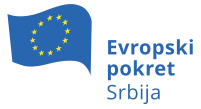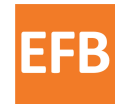http://balkaninsight.com/2021/10/04/kosovo-serbia-license-plates-sticker-regime-comes-into-force/
Kosovo-Serbia License Plates ‘Sticker Regime’ Comes Into Force
Drivers crossing the Kosovo-Serbia border on Monday started covering the state symbols on their vehicles’ license plates in accordance with an agreement reached in Brussels last week.
This is a temporary solution to the license plates dispute between the two countries which saw the roads to two border crossings blocked by Kosovo Serbs for almost two weeks.
“Implementation has started at national level at all border crossing points, as preparations have been made in time in terms of human resources and logistics, in order to enable citizens … with temporary plates in the form of stickers the possibility of free … movement,” a Kosovo police press statement read on Monday.
Two border crossings in Jarinje and Bernjak, in Serb-dominated northern Kosovo, were blockaded by Serbian protesters for 13 days.
Serbs started their blockade, and Kosovo deployed Special Police to the border area, after the dispute erupted on September 20, over Kosovo’s insistence that vehicles with Serbian license plates must change to temporary Kosovo ones when they enter the country, as Kosovo vehicles must do when entering Serbia.
Under the three-point agreement reached between Kosovo and Serbia, under the EU-facilitated dialogue, in Brussels, on September 30, stickers will be placed over each country’s insignia on number plates at border crossings in order to cover them up.
The EU rule-of-law mission in Kosovo, EULEX, continues patrolling and monitoring the area as well as the ‘sticker regime,’” the head of EULEX, Lars Gunnar Wigemark, said on Twitter on Sunday.
The first point of the agreement, requiring the removal of the blockades and withdrawal of the Kosovo Special Police, started implementation on Saturday, October 2.
NATO peacekeeping forces in Kosovo in KFOR deployed at Jarinje and Brnjak/Bernjak and would remain for “approximately two weeks to maintain a safe and secure environment and freedom of movement”, it said.
The removal of the blockades started at 8am and lasted until 4pm in accordance with the agreement. At first, the protesters in Jarinje and Bernjak only placed trucks on the side of the road, partially freeing it, while waiting for the Kosovo Special police to leave.
Nevertheless, the Kosovo Special Police informed KFOR that their orders were not to leave until the last truck was removed. Special Police left around 4pm as per the deadline of the agreement, greeted by protesters shouting: “Serbia, Serbia!”
Politicians from the Belgrade-backed Kosovo Serbian Srpska Lista party were also present on Saturday urging the protesters to remain calm but also to gather, as well as negotiating with KFOR for the removal of the blockades.
Protesters were staying in tents by the fire and had food and drinks. Some protesters in Bernjak wore T-shirts with the Kosovo map on them and with the Serbian Cyrillic words: “This will remain ours, just so you know.”
The protesters did not agree to give statements to BIRN.
The third point of last Thursday’s agreement also envisages the establishment of a working group consisting of representatives of the EU, Belgrade and Pristina to find a permanent solution to the licence plate issue.
The working group will hold its first meeting in Brussels on October 21. It will have a deadline of six months to prepare “a permanent solution to the high-level format of the [ongoing EU-facilitated Kosovo-Serbia] Dialogue”.





